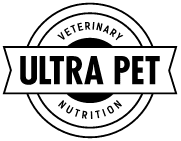Looking after your dog’s teeth
Dental conditions are common health problems in dogs. Plaque and tartar affects your dog’s teeth in the same way they affect yours. By looking after your dog’s teeth, you can help him/her live a long and happy life.
What to look out for
- Bad breath.
- Red, bleeding or swollen gums.
- Lack of appetite.
- Yellow-brown tartar build-up.
- Excessive drooling.
- Fractured, discoloured or missing teeth.
- Lumps and bumps on the gum.
- Swollen or misshapen jaw line.
How often should I clean my dog’s teeth?
Ideally, you should clean your dog’s teeth every day, but 3 to 4 times a week should be sufficient.
Start off early
If you have a new puppy, start right away, so that they get used to you looking inside his/her mouth and brushing the teeth. If you have an older dog, the process might take a little longer, but it’s well worth the effort.
How to clean your dog’s teeth
- Pick a time when your dog is calm and quiet.
- Lift his/her lips and gently rub the teeth with a finger wrapped in gauze or soft flannel.
- Concentrate on the outside of the teeth where plaque is likely to build up.
- Introduce a soft dog toothbrush by soaking it in warm water and brushing the teeth at a 45 degree angle where the teeth and gum meet. Stroke up and down gently in even movements with a light pressure.
- Introduce a dog toothpaste – never use a human toothpaste, as they are too abrasive and contain fluoride, which is highly toxic to dogs.
Annual or biannual dental check-ups at the vet
Remember to take your dog for an annual or biannual dental check-up at your vet. The vet may recommend a professional dental procedure to make sure your dog’s teeth are perfectly clean and healthy.
Where can I get pet dental products?
Your local vet or speciality pet store should stock canine toothbrushes, toothpaste and dental care chew toys.
